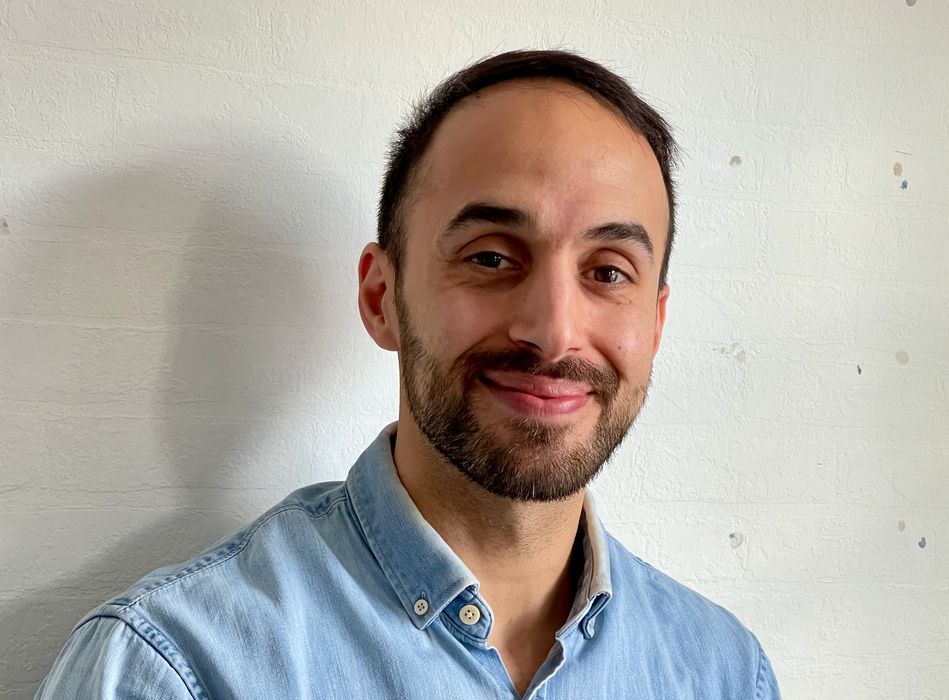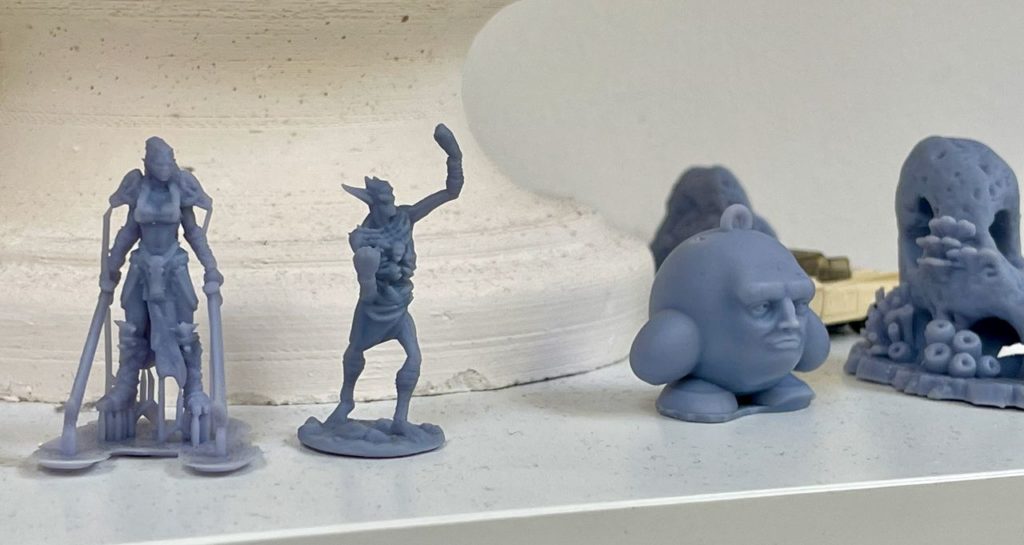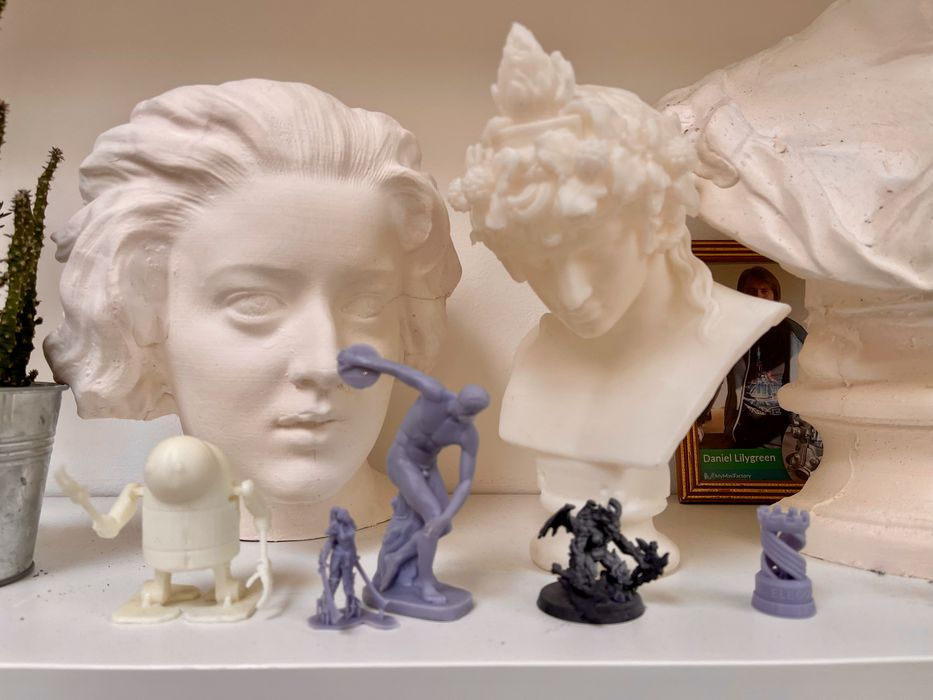
Recently I had the opportunity to sit down with MyMiniFactory CEO Nebo Nikolic at their London HQ.
At a small office around the corner from Farringdon Station in London is MyMiniFactory headquarters. From the outside, there is no indication of what’s really happening inside.
What happens inside? The company operates one of the most respected repositories for 3D printable objects, and has a vibrant and active community. This reputation grew years ago when they were the only repository that actually tested all uploaded 3D prints before posting them for download — something quite unlike all other repositories. I saw many test prints underway when I visited their old office in 2015.

These days they don’t literally 3D print every submission, but instead they use a combination of software simulation, community checking and the occasional test print.
Operating a 3D model repository as a business is an extraordinarily challenging prospect. You have to attract designers to present their works, but they won’t come unless you have plenty of users. You also have to attract users, but they won’t come unless you have many designers. It’s a chicken and egg scenario, if there ever was one.
Because of this near-insurmountable barrier, almost all repository projects eventually failed. The survivors tend to be either those catering to visual, not 3D print markets, or were eventually taken over or operated by a 3D printer manufacturer (see Formlabs/Pinshape, MakerBot/Thingiverse, Ultimaker/YouMagine, Prusa Research/PrusaPrinters, etc.)
Nikolic is trained as a mechanical engineer, which might initially seem to be a peculiar background for a CEO of what is essentially a software service. He spent several years at Volvo designing parts for automobiles, but eventually became enamored with the concept of 3D printing. He joined MyMiniFactory years ago as their head of designer relations, but more recently became the company’s CEO.
I’ve always been curious about how MyMiniFactory has survived as an independent source for 3D models; they are not owned or associated with any particular 3D printer manufacturer, unlike most other repositories.
In their early years there was no visible means of monetization, but that changed. In 2015 the company introduced a “store”, where designers could charge a fee for downloads of their works, with MyMiniFactory taking a small cut of the transaction.
Another change that happened in 2018 was the widespread availability of inexpensive, good quality resin 3D printers. These were able to reproduce gaming models often seen on MyMiniFactory, and became widely popular in the miniatures community. This group then focused on MyMiniFactory as a primary source for high quality 3D models of that genre.
Then, the pandemic struck. While this made a dent in many businesses, it didn’t do so at MyMiniFactory. They found increased interest in MyMiniFactory’s services as a form of what Nikolic calls “COVID-19 escapism”.
Their goal then was to support this growing community of designers and buyers in ways that weren’t being done at other online services. This has been the focus of Nikolic and his team over the past few years, and they seem to be succeeding.

Today Nikolic reports they have over 25,000 designers in their community — that’s designers, not buyers, who are even more in number.
What is it that makes this community stick with MyMiniFactory? Nikolic explained it is all about making them succeed as designers. He said:
“We try to empower them by working on the other parts of their journey.”
Nikolic recognizes that there is far more to the story than just 3D modeling a design. Designers participating in MyMiniFactory are essentially each small businesses, all having the same challenges as regular businesses. Often designers aren’t familiar with those challenges and that’s where MyMiniFactory comes in.
For example, a designer might be unsure of the price that should be placed on a new design. They can simply ask the team and community at MyMiniFactory for advice, and they’ll get it. There are more complex issues, such as intellectual property, or file formats, or marketing approaches, all of which and more can be solved through MyMiniFactory and their community. Nikolic said he’s often “drowning in requests” and works long hours to ensure community members are satisfied.
The value is so great that the community has become strong supporters of MyMiniFactory and very unlikely to move elsewhere. Thus, it’s Nikolic’s job to make sure that community is being served and happy. Nikolic describes it as a “permaculture”.
It’s of great value to MyMiniFactory itself, as Nikolic explains:
“The community is our eyes and ears, simply because of trust. They’ll tell you everything; you just need to listen.”
The culture extends not only inside the MyMiniFactory community, but outside of it: Nikolic explained that buyers frequently contact designers directly and make requests for changes or new ideas. The entire environment is quite open in this way, and that adds to the trust.
They’re constantly experimenting with different approaches in their community to better adapt to their needs. One recent innovation has been the introduction of “crowd funding” where designers have a “Kickstarter-like” environment to post new project campaigns. Nikolic told me that one designer recently raised over US$85K for a project.

That kind of cash can turn designing from a hobby into a profession, and that seems to be happening frequently at MyMiniFactory. As each designer becomes a success, this attracts more in a kind of virtuous cycle and the permaculture grows. Nikolic said:
“We’re turning designers and engineers into independent operators.”
I asked Nikolic whether they plan to IPO or SPAC in order to raise cash, considering their recent successes. He explained this won’t happen, saying:
“We want to stay away from the Shapeways IPO model, as it would disturb our method. What we are trying to achieve is so hard to do. I’ve done hundreds of recruiting interviews, many per person, to ensure a consistent culture.”
Their switch from a transactional “store” environment to a “crowd funding” world matches this philosophy, as they now view their participants as “Digital Creators”, rather than just 3D modelers. For example, they no longer have “ratings” for products, and instead rely on feedback and comments, which are more personal and insightful for all participants.
To support them they’re now working on ways to help their designers establish their own sub-communities, with services such as “Tribes”, “Stories” and “Competitions”.
It’s a little difficult to understand at first, because the MyMiniFactory business model is more interactive than transactional. But MyMiniFactory’s approach could be an example for how other companies might want to grow their communities.
Nikolic summed up the approach:
“We’re not a technology. We are human centric and we want to empower the designers.”
Via MyMiniFactory

